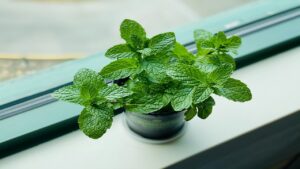How to Protect Lavender From Frost
Lavender, a stunning and fragrant flowering plant, is a showstopper. It is not ideal for those who are afraid of insects, as it attracts bees and pollinators. However, in winter, especially when cultivated in pots, lavender requires protection from frost. This plant is sensitive to extremely low temperatures and doesn’t fare well when exposed to severe cold.
Tricks to protect lavender from frost

Below, we will see what to do to protect lavender from frost if grown in pots:
- moving plants: it is quite easy, in general, to protect plants from cold and frost when they are in pots. Unless you have gigantic vases, relocating the pots to a sunnier and more sheltered area on the balcony or in the garden is an easy solution. In extremely cold conditions, during frosts or snow, consider temporarily moving the pots to a moderately heated greenhouse, garage, tool shed, or even the porch. As a last resort, if conditions are severe, bringing the pots indoors is also an option, as long as it’s not too warm
- pot: you can also insulate the pots by wrapping them with materials like jute bags, newspapers, or specialized plant sheets. This additional layer helps prevent the roots from freezing
- drainage: to avoid water stagnation in your potted plants, add some shards or gravel to the bottom of the pot to increase drainage

Yes, but what if the lavender is placed in the open ground? Well, you can apply some tricks to prevent the plant from dying due to the cold:
- mulching: first, carry out a good mulch. In this way, you will protect the plant from the cold by preventing the soil from freezing, you will guarantee constant humidity, and you will protect the roots. Additionally, it prevents weed growth. Use materials like dead leaves, wood chips, or straw for mulching, keeping it around 10 cm high. Ensure the mulch doesn’t touch the plant’s stem directly
- position: obviously, it should immediately be positioned in a sunny area, protected from drafts and frost
- pruning: it is a preventive measure that should be carried out in autumn, right after flowering. This helps remove dry, weak, or excess branches, ensuring the plant’s health. Importantly, avoid pruning in winter, as it may harm the plant during its vulnerable period
In general, these tips can be adapted to all plants that do not tolerate low temperatures well.






